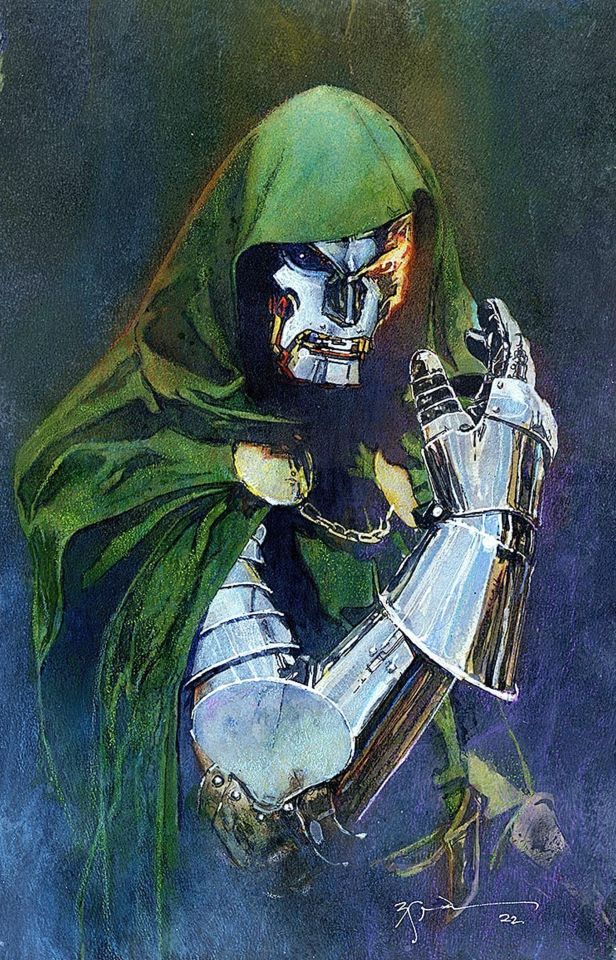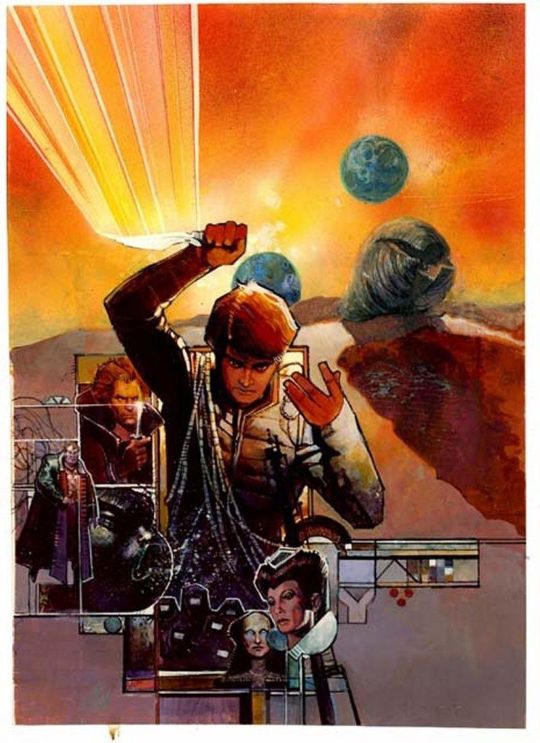#ruth bader ginsburg
Text
Regarding that twink getting railed in the Senate hearing room:
I can't be super happy because it's going to lead to various degrees of even more "they're sickly, sex-crazed vermin" discourse about gay men from both conservative politicians and just regular people. And OF COURSE it should not be his job to represent gay guys, as that is a role unfairly forced upon him by the marginalization of gay men...but it is a role he is in as a gay man working fairly high up in government, and he acted pretty grossly. Sex at work on someone else's desk is, generally, very bad.
On the other hand though he is an icon, a legend, and he is the moment. Having gay sex in the Senate is nothing short of an incredible and hilarious act of defiance, even if not intended as such. He got SPLIT OPEN right where RBG got confirmed to the supreme court, just like she would've wanted.
#senate#senate hearing room#senste hearing room#senate twink#politics#us politics#us capitol#senate floor#gay#lgbt#lgbtq#lgbtqia#quick rant#notorious rbg#ruth bader ginsburg#RBG#gay men#twink#congress#senate staffer#staffer#guys the RBG thing is just a joke okay relax
378 notes
·
View notes
Text

Belated Happy Birthday, Ruth Bader Ginsburg!
#Roevember #VoteBlue
171 notes
·
View notes
Text
Oligarchs can buy anything they want and pervert it to meet their awful agenda of oppression.
😡🤬🖕
#ruth bader ginsburg#republican assholes#maga morons#oligarch assholes#corporate greed#1% is destroying America#never trump#traitor trump#crooked donald
147 notes
·
View notes
Text
“Purchasing jabots in the United States, though, proved challenging: “Nobody in those days made judicial white collars for women,” Justice O’Connor remembered. “I discovered that the only places you could get them would be in England or France.”"
207 notes
·
View notes
Text










some Bill Sienkiewicz paintings.
#Bill Sienkiewicz#Painting#Comics#Art#Illustration#Master Class#Dune#Blade Runner#Ruth Bader Ginsburg#Judge Dredd#Doctor Doom#Medusa#Marvel Graphic Novel
73 notes
·
View notes
Text
“I ask no favor for my sex. All I ask of our brethren is that they take their feet off our necks.”
- Ruth Bader Ginsburg, #botd in 1933

43 notes
·
View notes
Text
An award named in Ruth Bader Ginsburg's honor was given to Elon Musk. The award is an award that "celebrates leaders who have demonstrated extraordinary accomplishments in their fields." An award that used to be for recognizing women, now expanded to include men... And given to Elon Musk. An award for Ruth Bader Ginsburg. For women. Given to Elon Musk.
I'm so sick of women's achievements and wishes being ignored or pushed aside so men can get more ass pats when we already live in the world of ass pats for men.
39 notes
·
View notes
Text
i feel like one of the Events that really disillusioned me from leftism — not as an ideology or set of ideologies but as a community — was when ruth bader ginsburg died on rosh hashanah and while all the leftist jews i knew were mourning the death of a prominent jewish figure on such a significant day, the non jewish leftists were mocking us, telling us we were “idolizing a war criminal”, laughing at our “religious zealotry” that made us “blind to her bigotry”, making antisemitic memes of her, and saying massively offensive things like “i hope her name is erased from the book of life.” leftist goyim looked up just enough about death and judaism to find the most offensive phrase they could and used it gleefully while the jewish community mourned.
so yeah. while i still consider myself a leftist, there’s a HUGE caveat that i am a jewish leftist. because i have seen firsthand how leftists abandon minorities, specifically jews, the second things become even the least bit complicated and nuanced.
685 notes
·
View notes
Text
haven’t seen this posted here yet but this year’s Ruth Bader Ginsburg Awards for “women who exemplify human qualities of empathy and humility” have been awarded to…… elon musk & rupert murdoch. it’s simply beyond parody
16 notes
·
View notes
Text
just realized that since cody has the questing blade he canonically is part of the hall of heroes with ruth bader ginsberg
125 notes
·
View notes
Link
More than five centuries after it was formulated in a series of papal decrees, the Vatican issued a formal announcement on March 30 repudiating the Euro-supremacist “Doctrine of Discovery.” In essence, the “doctrine” said that all lands not occupied by “Christians” passed into the hands of the European conquerors as soon as they were “discovered,” and their inhabitants enslaved.
Composed of decrees issued between 1452 and 1497, it served as the quasi-legal justification for the expropriation of entire continents in the name of spreading the Catholic faith. The repudiation by the Pope is the culmination of decades of struggle by Indigenous peoples in the United States, Canada and around the world demanding its withdrawal.
But while the Pope has now renounced it, the U.S. Supreme Court has not. The high court continues to treat the “doctrine” as an integral basis of U.S. law, particularly in regard to the rights — or lack thereof — of Native peoples.
Most notable in recent times was a 2005 decision authored by the late liberal Justice Ruth Bader Ginsburg which invoked the “Doctrine of Discovery” in her majority ruling against the Oneida Indian Nation. The Oneidas were seeking to recover lands and rights in central New York State guaranteed to them under the 1794 Treaty of Canandaigua treaty with the U.S., signed by George Washington, then president.
The Oneidas, one of the six nations of the Haudenosaunee (Iroquois) Confederacy were awarded 300,000 acres “in perpetuity” by the treaty. By the 20th century, nearly all of that land had been taken over. In the 1970s, the Oneidas began buying small parcels on what had been their reservation land, including in the small city of Sherill, New York. They objected to the demand by the city that they pay property taxes on the basis that they were a sovereign nation. While the Oneidas won in lower federal courts, the Supreme Court ruled against them 8-1, with Ginsburg authoring the decision:
“Under the Doctrine of Discovery, title to the land occupied by Indians when the colonists arrived became vested in the sovereign – first the discovering European nation and later the original states and the United States . . .
“Given the longstanding non-Indian character of the area and its inhabitants, the regulatory authority constantly exercised by New York State and its counties and towns, and the Oneidas’ long delay in seeking judicial relief against parties other than the United States, we hold that the tribe cannot unilaterally revive its ancient sovereignty, in whole or in part, over the parcels at issue.”
In 2020, the Supreme Court by a 5-4 vote upheld the right of Native nations to reservations that would have included nearly half of Oklahoma. While this was a victory for a coalition of Native nations, right-wing justice Neil Gorsuch wrote the majority opinion upholding the government’s power to deny the right of self-determination to Indian peoples.
“Once a reservation is established, it retains that status until Congress explicitly indicates otherwise,” wrote Gorsuch. “Only Congress can alter the terms of an Indian treaty by diminishing a reservation, and its intent to do so must be clear and plain.”
How did a loathsome “doctrine” authored in feudal times come to have what liberal and conservative Supreme Court justices alike consider a legitimate basis in U.S. law?
It was the Supreme Court itself that incorporated the “doctrine” into U.S. law, which became foundational in dealing with Native nations, in a key 1823 case, Johnson v. McIntosh.
The decision by Chief Justice John Marshall, declared that, in keeping with the “Doctrine of Discovery,” Native people had only the “right to occupancy” of land and not the right to title or ownership. Only the federal government, Marshall ruled, could own and sell Native lands and that “the principle of discovery gave European nations an absolute right to New World lands”
Following the Vatican’s repudiation, the struggle will intensify for the U.S. government to do the same.
#indigenous peoples struggles#Doctrine of Discovery#Ruth Bader Ginsburg#us supreme court#the vatican#indigenous#genocide#land rights#article#imperialism#us imperialism#colonization#colonialism#age of discovery#history
58 notes
·
View notes
Text

LETTERS FROM AN AMERICAN
March 31, 2024
HEATHER COX RICHARDSON
APR 01, 2024
On Wednesday, President Joe Biden issued an executive order instructing the National Park Service to “highlight important figures and chapters in women’s history.” “Women and girls of all backgrounds have shaped our country’s history, from the ongoing fight for justice and equality to cutting-edge scientific advancements and artistic achievements,” the announcement read. “Yet these contributions have often been overlooked. We must do more to recognize the role of women and girls in America’s story, including through the Federal Government’s recognition and interpretation of historic and cultural sites.”
In a time when American women are seeing their rights stripped away, it seems worthwhile on this last day of Women’s History Month to highlight the work of Supreme Court Justice Ruth Bader Ginsburg, who challenged the laws that barred women from jobs and denied them rights, eventually setting the country on a path to extend equal justice under law to women and LGBTQ Americans.
Ginsburg was born in Brooklyn, New York, on March 15, 1933, in an era when laws, as well as the customs they protected, treated women differently than men. Joan Ruth Bader, who went by her middle name, was the second daughter in a middle-class Jewish family. She went to public schools, where she excelled, and won a full scholarship to Cornell. There she met Martin Ginsburg, and they married after she graduated. “What made Marty so overwhelmingly attractive to me was that he cared that I had a brain,” she later explained. Relocating to Fort Sill, Oklahoma, for her husband’s army service, Ginsburg scored high on the civil service exam but could find work only as a typist. When she got pregnant with their daughter, Jane, she lost her job.
Two years later, the couple moved back east, where Marty had been admitted to Harvard Law School. Ginsburg was admitted the next year, one of 9 women in her class of more than 500 students; a dean asked her why she was “taking the place of a man.” She excelled, becoming the first woman on the prestigious Harvard Law Review. When her husband underwent surgery and radiation treatments for testicular cancer, she cared for him and their daughter while managing her studies and helping Marty with his. She rarely slept.
After he graduated, Martin Ginsburg got a job in New York, and Ginsburg transferred to Columbia Law School, where she graduated at the top of her class. But in 1959, law firms weren’t hiring women, and judges didn’t want them as clerks either—especially mothers, who might be distracted by their “familial obligations.” Finally, her mentor, law professor Gerald Gunther, got her a clerkship by threatening Judge Edmund Palmieri that if he did not take her, Gunther would never send him a clerk again.
After her clerkship and two years in Sweden, where laws about gender equality were far more advanced than in America, Ginsburg became one of America’s first female law professors. She worked first at Rutgers University—where she hid her pregnancy with her second child, James, until her contract was renewed—and then at Columbia Law School, where she was the first woman the school tenured.
At Rutgers she began her bid to level the legal playing field between men and women, extending equal protection under the law to include gender. Knowing she had to appeal to male judges, she often picked male plaintiffs to establish the principle of gender equality.
In 1971 she wrote the brief for Sally Reed in the case of Reed vs. Reed, when the Supreme Court decided that an Idaho law specifying that “males must be preferred to females” in appointing administrators of estates was unconstitutional. Chief Justice Warren Burger, who had been appointed by Richard Nixon, wrote: “To give a mandatory preference to members of either sex over members of the other…is to make the very kind of arbitrary legislative choice forbidden by the Equal Protection Clause of the Fourteenth Amendment” to the Constitution.
In 1972, Ginsburg won the case of Moritz v. Commissioner. She argued that a law preventing a bachelor, Charles Moritz, from claiming a tax deduction for the care of his aged mother because the deduction could be claimed only by women, or by widowed or divorced men, was discriminatory. The United States Court of Appeals for the Tenth Circuit agreed, citing Reed v. Reed when it decided that discrimination on the basis of sex violated the Equal Protection Clause of the Fourteenth Amendment to the Constitution.
In that same year, Ginsburg founded the Women’s Rights Project at the American Civil Liberties Union (ACLU). Between 1973 and 1976, she argued six gender discrimination cases before the Supreme Court. She won five. The first time she appeared before the court, she quoted nineteenth-century abolitionist and women’s rights activist Sarah Grimké: “I ask no favor for my sex. All I ask of our brethren is that they take their feet off our necks.”
Nominated to the Supreme Court by President Bill Clinton in 1993, she was confirmed by a vote of 96 to 3. Clinton called her “the Thurgood Marshall of gender-equality law.”
In her 27 years on the Supreme Court, Ginsburg championed equal rights both from the majority and in dissent (which she would mark by wearing a sequined collar), including her angry dissent in 2006 in Ledbetter v. Goodyear Tire & Rubber when the plaintiff, Lilly Ledbetter, was denied decades of missing wages because the statute of limitations had already passed when she discovered she had been paid far less than the men with whom she worked. “The court does not comprehend or is indifferent to the insidious way in which women can be victims of pay discrimination,” Ginsburg wrote. Congress went on to change the law, and the first bill President Barack Obama signed was the Lilly Ledbetter Fair Pay Act.
In 2013, Ginsburg famously dissented from the majority in Shelby County v. Holder, the case that gutted the 1965 Voting Rights Act. The majority decided to remove the provision of the law that required states with histories of voter suppression to get federal approval before changing election laws, arguing that such preclearance was no longer necessary. Ginsburg wrote: “Throwing out preclearance when it has worked and is continuing to work to stop discriminatory changes is like throwing away your umbrella in a rainstorm because you are not getting wet.” As she predicted, after the decision, many states immediately began to restrict voting.
Ginsburg’s dissent made her a cultural icon. Admirers called her “The Notorious R.B.G.” after the rapper The Notorious B.I.G., wore clothing with her image on it, dressed as her for Halloween, and bought RBG dolls and coloring books. In 2018 the hit documentary "RBG" told the story of her life, and as she aged, she became a fitness influencer for her relentless strength-training regimen. She was also known for her plain speaking. When asked when there would be enough women on the Supreme Court, for example, she answered: “[W]hen there are nine.”
Ginsburg’s death on September 18, 2020, brought widespread mourning among those who saw her as a champion for equal rights for women, LGBTQ Americans, minorities, and those who believe the role of the government is to make sure that all Americans enjoy equal justice under law. Upon her passing, former secretary of state Hillary Clinton tweeted: “Justice Ginsburg paved the way for so many women, including me. There will never be another like her. Thank you RBG.”
Just eight days after Ginsburg’s death, then-president Donald Trump nominated extremist Amy Coney Barrett to take her seat on the court, and then–Senate majority leader Mitch McConnell (R-KY) rushed her confirmation hearings so the Senate could confirm her before the 2020 presidential election. It did so on October 26, 2020. Barrett was a key vote on the June 2022 Dobbs v. Jackson Women’s Health Organization decision, the Supreme Court ruling that overturned the 1973 Roe v. Wade decision recognizing the constitutional right to abortion.
Ginsburg often quoted Justice Louis Brandeis’s famous line, “The greatest menace to freedom is an inert people,” and she advised people to “fight for the things you care about, but do it in a way that will lead others to join you.”
Setting an example for how to advance the principle of equality, she told the directors of the documentary RBG that she wanted to be remembered “[j]ust as someone who did whatever she could, with whatever limited talent she had, to move society along in the direction I would like it to be for my children and grandchildren.”
LETTERS FROM AN AMERICAN
HEATHER COX RICHARDSON
#Letters From An American#Heather Cox Richardson#history#women's history#women#Ruth Bader Ginsburg#women's rights#US History
9 notes
·
View notes
Note
Could you recommend books on the Supreme Court? I honestly didn’t think there were any.
There are countless numbers of books about the Supreme Court, so it really depends on what exactly you're interested in reading about, whether that might be a general history of the Court itself, biographies of the most influential justices, landmark cases, and so on.
By no means is this a complete list, but here's some suggestions that I can recommend:
GENERAL HISTORY OF THE SUPREME COURT
•A People's History of the Supreme Court: The Men and Women Whose Cases and Decisions Have Shaped Our Constitution by Peter Irons (BOOK | KINDLE | AUDIO)
•Nine Scorpions in a Bottle: Great Judges and Cases of the Supreme Court by Max Lerner and edited by Richard Cummings (BOOK)
•The Supreme Court by William H. Rehnquist (BOOK | KINDLE | AUDIO) -- This history of the Court is especially interesting because it was written by the incumbent Chief Justice.
•The Nine: Inside the Secret World of the Supreme Court by Jeffrey Toobin (BOOK | KINDLE | AUDIO)
BOOKS ABOUT SPECIFIC JUSTICES OR COURTS
•The Oath: The Obama White House and the Supreme Court by Jeffrey Toobin (BOOK | KINDLE | AUDIO)
•Leaving the Bench: Supreme Court Justices at the End by David N. Atkinson (BOOK) -- A unique book about Justices at the end of their time on the Court and how they ultimately left the Court. Most of them died in office because the Court is a lifetime appointment, but the book looks at how some Justices held on to their seats and remained on the bench despite failing health or faltering cognitive abilities.
•First: Sandra Day O'Connor by Evan Thomas (BOOK | KINDLE | AUDIO)
•Sisters In Law: How Sandra Day O'Connor and Ruth Bader Ginsburg Went to the Supreme Court and Changed the World by Linda Hirshman (BOOK | KINDLE | AUDIO) -- An excellent dual biography about the first two women ever appointed to the Supreme Court and the impact they had on American law.
•The Brethren: Inside the Supreme Court by Bob Woodward and Scott Armstrong (BOOK | KINDLE | AUDIO) -- The legendary journalist from the Washington Post gives the Woodward treatment to the Supreme Court presided over by Chief Justice Warren E. Burger.
•The Showdown: Thurgood Marshall and the Supreme Court Nomination That Changed America by Wil Haygood (BOOK | KINDLE | AUDIO) -- The remarkable life of Thurgood Marshall, who was already a legendary figure in the annals of American justice as a civil rights lawyer who successfully argued the case the led to the Supreme Court striking down Brown v. the Board of Education. Marshall's place in history became even more important when President Lyndon B. Johnson nominated him as the first-ever Black Supreme Court Justice.
•Five Chiefs: A Supreme Court Memoir by John Paul Stevens (BOOK | KINDLE | AUDIO) -- This is probably my favorite of the recommendations. John Paul Stevens, the third longest-serving Justice in the history of the Supreme Court, writes about the five Chief Justices (Fred Vinson, Earl Warren, Warren E. Burger, William H. Rehnquist, and John Roberts) that he worked for or with throughout his long career, beginning as a law clerk under Chief Justice Vinson and eventually serving as Associate Justice alongside Chief Justice Burger, Chief Justice Rehnquist, and Chief Justice Roberts.
BOOKS ABOUT JOHN MARSHALL (Longest-serving Chief Justice of the United States and arguably the most important judge in American history)
•John Marshall: The Chief Justice Who Saved the Nation by Harlow Giles Unger (BOOK | KINDLE | AUDIO)
•Without Precedent: Chief Justice John Marshall and His Times by Joel Richard Paul (BOOK | KINDLE | AUDIO)
•John Marshall: The Man Who Made the Supreme Court by Richard Brookhiser (BOOK | KINDLE | AUDIO)
I also strongly recommend checking out James F. Simon's books about the Supreme Court and the Presidency, which focus on the impact that the Court and the Chief Justices at the time had on specific Presidential Administrations. These are all written by James F. Simon:
•Eisenhower vs. Warren: The Battle for Civil Rights and Liberties (BOOK | KINDLE | AUDIO)
•Lincoln and Chief Justice Taney: Slavery, Secession, and the President's War Powers (BOOK | KINDLE | AUDIO)
•What Kind of Nation: Thomas Jefferson, John Marshall, and the Epic Struggle to Create a United States (BOOK | KINDLE | AUDIO)
•FDR and Chief Justice Hughes: The President, the Supreme Court, and the Epic Battle Over the New Deal (BOOK | KINDLE)
#History#Supreme Court#Supreme Court History#Books#Book Suggestions#Book Recommendations#Supreme Court Books#Judiciary#Judicial Branch#Chief Justice of the United States#Chief Justices#John Paul Stevens#John Marshall#James F. Simon#Thurgood Marshall#William H. Rehnquist#Sandra Day O'Connor#Ruth Bader Ginsburg#RBG
30 notes
·
View notes
Text


UPDATED! Get the Ruth Bader Ginsburg Amigurumi Doll Pattern - 'The Notorious RBG Amigurumi' - Designed by Tobey King 👉 https://buff.ly/3rHOM3W
15 notes
·
View notes
Text

RBG Collars | Elinor Carucci
9 notes
·
View notes
